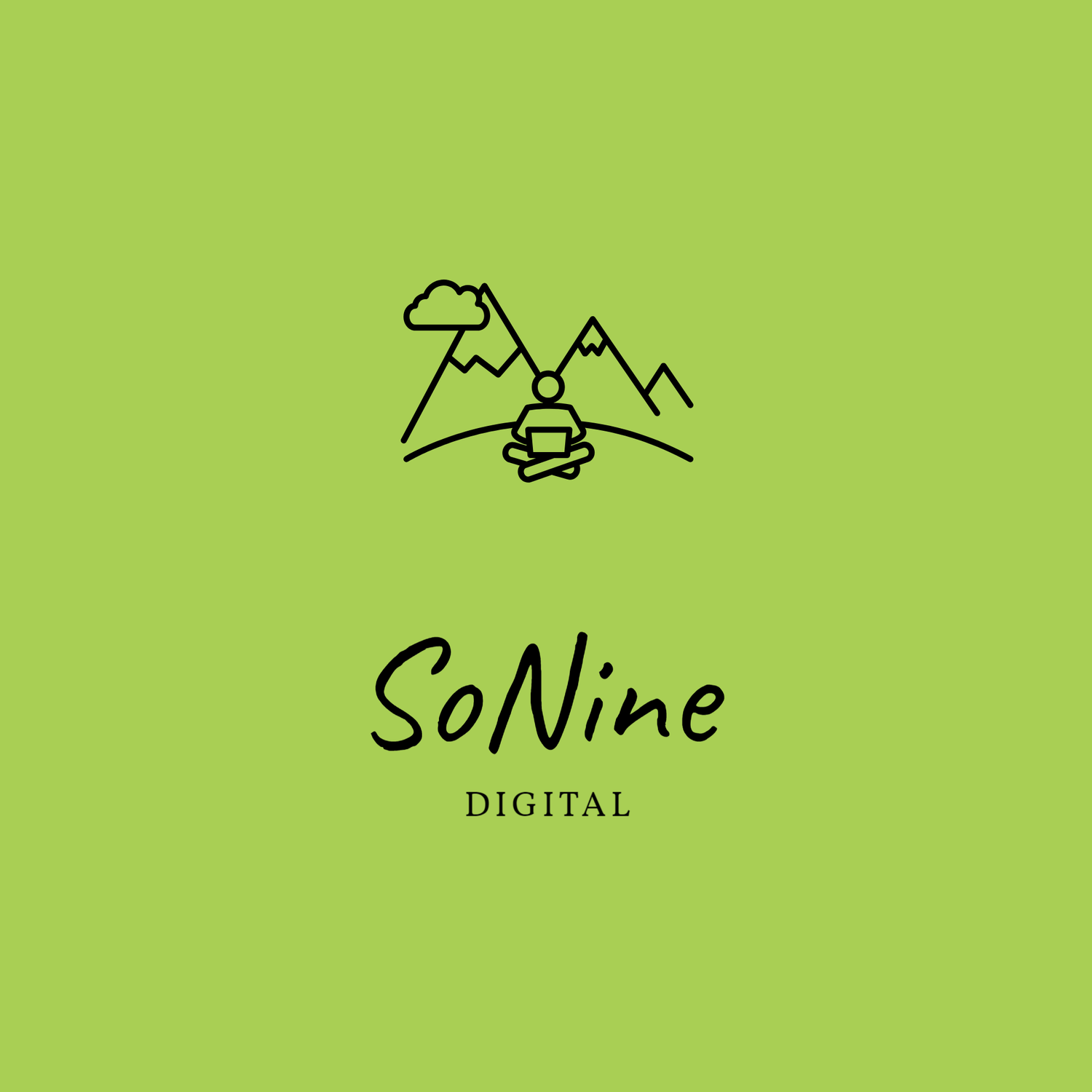Stop Wasting Time: The Freelancer's Blueprint for Home Productivity
This guide dives into the essential tools, routines, and mindset shifts that will turn your home office into a productivity powerhouse. Stop clocking hours and start generating results.
Do you feel your home office is more of a comfy couch than a command center? Discover the secrets to laser focus and skyrocket your freelance productivity with our essential toolkit. (We mean tips).
Working from home can be overwhelming for a novice, especially when starting out. The line between the relaxation your home provides becomes blurred when you begin working in that same space, and it can affect your level of productivity. However, there are helpful ways to make this transition easier. These tips ensure productive working days despite the temptations of comfort and leisure.
Set a Routine and Stick to It
Working from home on your own time can be challenging for beginners, as the responsibilities at home seem to stare at you, waiting to be dealt with, while your work tasks stare back at you from the other side. This can be overwhelming, but sticking to a routine can train and rewire your mind to help with setting the boundaries of when to do certain tasks. When the boundaries are set, distractions can be lessened as you establish a routine that works for you. When you have a regular routine, there is a balance between your personal life and work. Sticking to a schedule that works best for you will help you stay consistent as well. The mind becomes more relaxed, and thus routines provide structure and foster self-control.
Set up a Dedicated Workspace
In the same way that a routine helps you set the boundary between work and other aspects of your life, setting up a dedicated workspace can also produce the same effect. For example, the bedroom is a place for relaxation, and our body knows this. That's why it's easier to fall asleep in the bedroom rather than, let's say, the living room or any other area in the household. This is because the brain associates that specific area with rest. Setting up a dedicated workspace and continuously staying in that area during work hours can help you in the long run by training your brain's association with the area for work. This association can help you focus and will significantly boost your productivity in the long run.
Take a Breather Once in a While
Some would say that taking breaks is a lazy habit or that it is a sign of not being productive enough. However, studies say that taking breaks between working hours reduces the possibility of burnout and mental fatigue, both of which could negatively impact one's productivity levels.
Remember, you are your greatest asset. Although dedication is a good work ethic, allowing yourself to rest is essential and beneficial, both for your career and your well-being. It can help improve your focus and concentration by resetting your mind after a short rest, allowing you to finish tasks faster. It refreshes your creativity and energizes you.
Set Clear Realistic Goals
Keeping a to do list and creating a timetable, for example, can help you organize your tasks and can help you do them promptly. Seeing your progress can also boost your motivation and confidence. Setting your projects and sticking to the schedule helps you overcome procrastination.
There is no “one size fits all” for your freelancing journey. Remember, Be confident in your journey, and be kind to yourself throughout.
Start mastering your home office here.
Client MIA? Turn Ghosting into a Growth Opportunity
What if you could transform this seemingly negative experience into a powerful opportunity for growth.
Being ghosted by a client is not a good feeling, but it's a common experience in the freelancing world. Here's how to navigate it and bounce back.
It's a familiar scenario: you've put in the work, invested time, sent the proposal, maybe even started the project, and then... then... then...no reply. Your client has vanished into thin air, leaving you wondering what went wrong. While it's easy to get caught up in frustration or self-doubt, getting ghosted is often less about you and more about a client's changing priorities, internal issues, or simply poor communication skills.
Why It Happens (and Why It's Not Always You)
Clients ghost for a variety of reasons that often have nothing to do with your work quality:
Budget changes: Their financial situation may have changed unexpectedly.
Restructuring: New management or staff changes can slow projects.
They are not that ready: The project might have grown beyond their initial vision, or they realized they weren't ready.
Poor communication: Some people just aren't good at delivering bad news or closing out projects.
They got another option: Sometimes, another provider might have offered a different solution, most of the time, cheaper option.
Moving On and Landing Your Next Gig
While it stings, dwelling on a ghosting won't help you or your business. Here's how to move on and quickly secure your next job offer:
1. A Gentle Follow-Up
Don't spam them, but one last polite, non-pushy email can sometimes work wonders. Focus on being respectful and clear about your purpose. Keep it concise and open-ended. Something like:
"Hi [Client Name],
Just checking in on the [Project Name] project. I haven't heard back and wanted to ensure my last message didn't get lost. Please let me know if there's been any change on your end. If you're no longer proceeding, I completely understand.
Best regards, [Your Name]"
Give them a few days. If there's still no response, it's time to let go.
2. Re-assess and Learn
Take a moment to “objectively” review your interactions. Did you miss any red flags? Was your communication clear? Is there information that is not set clearly? It is best also to shift your perspective and not dwell much on self-doubt. This isn't about blaming yourself, but about identifying any areas for improvement in your process for future clients.
3. Improve Your Client Pipeline
It’s best always to review your client list. Never rely on just one or two potential clients. Continuously network, market your services, be flexible, and have multiple leads in your pipeline. This way, if one falls through, you've got others to pursue. Diversify not only your clients. Never give up on networking. Be visible on platforms such as LinkedIn, conferences, freelance marketplaces, events, and even referrals.
4. Outreach and Network
Reach out to past clients, colleagues, and connections. Let them know you're available for new projects. Referrals are often the quickest path to new opportunities. Update your LinkedIn profile and relevant online portfolios to reflect your latest skills and availability. Build a strong online presence.
5. Upgrade Your Skills & Portfolio
Your greatest asset is your skillset. Use this downtime to your advantage. Take an online course, masterclasses, update your portfolio with your best work, or create new samples that showcase skills you want to highlight. A stronger portfolio makes you more attractive to potential clients.
6. Improve Your Outreach Strategy
Are your proposals engaging and client magnet? Is your initial outreach clear and direct? Perhaps this is the ideal opportunity to refine your approach and make a stronger first impression. Focus on the value you bring to potential clients. Always check on what their needs are and offer solutions and options. Every client has pain points; what are they dealing with? That’s your entry. Give it your best shot. You’ll never know when they'll reach out to you or contact you.
7. Stay Consistent and Persistent
Rejection, in any form, is part of the journey. Don't let one ghosting experience derail your motivation. Always shift your perspective. Dust off and move on. Easier said than done, but shifting your mindset always helps. Maintain a positive mindset, learn from every interaction, and keep actively pursuing new opportunities. Your next great client is out there! And do not forget that even in the season of waiting, there should be joy and opportunities.
Uncover more tips for remote work mastery.
9 Game Changing AI Tools in Canva
These 9 game-changing AI tools in Canva are transforming workflows and unlocking new creative possibilities.
Canva has rapidly expanded its AI capabilities, collectively grouped under Magic Studio, to empower users with game-changing tools for design and content creation. Here are 9 useful AI tools in Canva that are transforming the way people create:
Magic Design: This is a powerhouse for instant design generation. You can simply describe what you want to create (e.g., "a modern post about coloring books") or upload an image, and Magic Design will instantly generate a variety of tailored templates, presentations, or even videos, personalized to your idea. It's a massive time-saver for getting a first draft.
Magic Media (Text-to-Image & Text-to-Video): This generative AI tool allows you to turn text prompts into stunning visuals. You can size and style up the design depending on your desired preference.
Text-to-Image: Describe the image you envision, and Canva's AI will generate unique images in various styles (photo, neon, watercolor, etc.). This is incredibly useful for creating custom imagery when stock photos don't quite fit or for generating product visuals.
Text-to-Video: Similar to image generation features, you can input a text prompt to create short-form videos and GIFs with visuals, transitions, and even music.
Magic Edit: This tool allows you to intelligently modify elements within an existing image. You can highlight a specific area with a brush, then use a text prompt to add, replace, or change objects or colors within that area. It's a fantastic and fun way for reimagining images without complex photo editing software.
Magic Eraser: A highly practical tool for cleaning up images. Simply brush over unwanted objects, text or distractions in your photo, and Magic Eraser will intelligently remove them, making your subject stand out and well polished.
Magic Switch (Resize & Translate): This is a game-changer for repurposing content.
One-Click Resizing: Instantly adapt your designs to multiple formats (e.g., from an Instagram post to a Facebook cover or presentation slide) while maintaining layout integrity.
Translate: Automatically translate the text in your designs into over 100 languages, making global content creation incredibly efficient. A very useful tool for transcriptions and using old and new content.
Magic Write (with Brand Voice): An AI-powered writing assistant that helps you generate text for various content types, such as social media captions, blog posts, and presentations. What makes it powerful is its ability to learn and apply your brand's unique voice, ensuring consistency across all your written content.
Magic Animate: Bring your static designs to life effortlessly. Magic Animate automatically applies perfect animations and transitions to your entire design, suggesting styles based on your content, adding dynamic visual interest to presentations and social media posts.
Magic Grab: This tool allows you to easily select and separate the main subject of your photo, making it movable and editable independently. You can then reposition, resize, or even apply new effects to the grabbed element, offering immense flexibility in redesigning images.
Magic Expand: If your photo framing isn't quite right or you need to change the aspect ratio, Magic Expand can intelligently extend the edges of your image in any direction. It fills in missing areas based on the existing content, allowing you to fix awkward compositions or adapt images for different layouts.
These AI tools within Canva's Magic Studio are designed to simplify and speed up the design process, making professional-quality visuals and content creation accessible to a much broader audience, regardless of your design expertise, and helps you save lots of time and money.
Looking for more resources? Visit our blog here.
The Portfolio Advantage: Why Every Freelancer Needs One
Landing freelance gigs often boils down to one crucial factor: demonstrating your skills. Forget lengthy applications and generic pitches – your portfolio provides concrete proof of what you can deliver. Learn how to curate your best work, optimize it for different platforms, and use it effectively to convert prospects into paying clients.
In the bustling world of freelancing, where first impressions are everything, your portfolio isn't just a collection of past projects – it's your brand, your work, the outcome of your creativity. Think of it as your 24/7 advocate, tirelessly showcasing your skills honed for many years and the tangible results you deliver, even when you're not in the room.
Lengthy resumes and lame speeches are gone nowadays. A well-crafted portfolio speaks volumes. It allows potential clients to see your capabilities in action, moving beyond promises to proven success. Whether you're a writer, designer, developer, or any other type of freelancer, your portfolio is the ultimate show, don't tell tool.
Why is it so beneficial in freelancing, remote work?
Visual Proof: It gives the client the opportunity to know what your skillsets are. It provides concrete evidence of your abilities and the quality of your work.It highlights your strengths at work. As they say, creative assets, this is your work proof.
Builds Credibility: Seeing is believing. A strong portfolio instills confidence in your potential clients. They are not just proof but a success of your previous projects, done gracefully.
Attracts the Right Clients: It helps you filter inquiries and attract clients whose needs align with your expertise. Clients will reach you and can be a great fit of what they are looking for, and what you really like to work with.
Highlights Your Niche: You can curate your portfolio to showcase your specialization and passion. It can be a blog, link to a previously edited video, a well crafted web page, a compilation of graphic designs, a sample pixel art, reels, published article link, a copywriting samples, social media captions etc. The opportunities are endless. You can also curate it based on your interests and preferences.
Differentiates You: In a competitive market, your unique portfolio can make you stand out from the crowd. It also showcases your current knowledge on your chosen niche. This may help your client and you formulate the appropriate rate for a certain project.
Don't let your best work gather digital dust! Be proud of all your accomplished work! The secret is to invest time in creating a compelling and easily accessible portfolio. It's not just a website; it’s not just a pdf file, it's your most valuable marketing asset. Make it shine, keep it always updated, and watch it work its magic in landing you those dream freelance gigs.
What are your go-to portfolio tips? Share them in the comments below!
Creative Fatigue: When Your Brain Turns into a Stump: (and How to Escape It!)
Creative slump got you down? This blog post has the WFH hacks you need to get your creative juices flowing again.
Hey fellow remote workers! Let's be real, working from home in the Philippines is a dream come true… until your brain decides to stage a rebellion and morph into a giant, unproductive balete tree. You know what I'm talking about: the dreaded creative slump.
One minute you're churning out brilliant ideas faster than a jeepney can overtake a tricycle, the next you're staring at your screen like it's written in ancient Baybayin. Suddenly, "brainstorming" feels more like "brain-mourning." My laziness has left me at a loss for what to do next. Where are the ideas? Is anyone else experiencing this?
Yes. We've all been there. The good news is, escaping the clutches of the creative slump is totally normal. Sometimes we’re tired or uninspired. And that’s totally fine. Here are some tried-and-tested tips to get your creative juices flowing again:
1. Take a "Break" (But Make it Fun, Simple and Productive):
Aside from the usual cellphone break, channel your inner Tita and indulge in some mindful activities. Put down your phone. Water your plants (because apparently, they judge your productivity too), listen to some chill OPM, or even try your hand at making easy and healthy home cooked meals. Stepping away from your screen can work wonders. It refreshes your mind and gives you a clean state again.
2. Embrace the "Labas Muna" Adventure:
Sometimes, the best way to find inspiration and relaxation is to leave the house. Go for a quick walk in the park, visit a local market, or just people-watch at a nearby coffee shop. Visit a bookshop, or even soak in the sights, sounds, and kwentuhan of your surroundings. Explore outdoor activities such as hiking or camping. You might be surprised at the ideas that spark when you're out of your home office.
3. Connect with your close friends!
Connect with your close comrades. A quick chat about your struggles, a shared laugh, or even just some friendly chismis can be a great way to break the monotony and get a fresh perspective. Plus, who knows, you might even find some collaborative inspiration.
4. "Indulge Your Inner Child" Therapy:
Remember those things you loved doing as a kid? Drawing, painting, playing with LEGOs, biking, dancing, building a fort out of blankets? Revisit the activities! Let your inner child run wild and free. Sometimes, the most creative ideas come from the most unexpected places.
5. "Treat Yourself" (Because You Deserve It):
Let's be honest, sometimes the best way to beat a creative slump is to simply treat yourself. Order your favorite food, watch a movie, or just relax and do nothing. Recharging your batteries is crucial for peak performance.
Bonus Tip: Don't be afraid to embrace the slump! It's a natural part of the creative process. Just don't let it linger too long. Use these tips to get back on track and remember, you've got this!
So, there you have it, my fellow WFH warriors. The next time your brain decides to take a vacation, remember these tips and kick that creative slump to the curb. Whatever season in your professional life you are in now, you can rekindle that creative spark, it takes time but you’ll get there. Shake it off and start again, Happy working!













